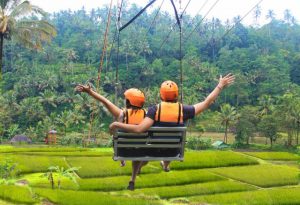Starwood Hotels and Resorts will relocate from the USA to India

Starwood Hotels & Resorts Worldwide, Inc announced that it will relocate its global headquarters from the United States to India in March 2015 for a month-long immersion.
Starwood President & CEO Frits van Paasschen and the company’s top executives will split their time between Mumbai and Delhi, conducting day-to-day business from this important global destination with immense potential for outbound travel.
Following the company’s successful relocations to China in 2011 and Dubai in 2013, this third leadership move underscores Starwood’s unique approach to cultivating a global culture and fostering relationships in key growth markets.
“Global trends are revolutionizing travel. Rapidly growing markets and a more interconnected world are bringing high-end travelers to new markets like never before,” said van Paasschen. “As a company with operations in over 100 countries, we at Starwood know that there is no substitute for witnessing firsthand this huge transformation.”
van Paasschen continued: “This is a particularly exciting time for us relocate to India. Its renewed focus on travel infrastructure is much needed, as travel demand is fueled by economic growth and a population expected to overtake China by 2030. We all know of India as a hotbed of technological innovation and global services. Coupled with the rise in entrepreneurship and investment, millions of people are joining its middle class every year. And, of course, this means millions of new travelers. At the same time, India is both unique and immensely diverse. Our extended time there will allow us to immerse ourselves and appreciate new approaches to the business of hospitality.”
Over the course of the relocation, Starwood executives from around the globe will conduct business in India, nearly 8,000 miles and 10 time zones away from the company’s Stamford, Connecticut headquarters. During the month, the team will travel to cities throughout India to meet with associates, customers, owners and prospective developers, including Bangalore, Chennai, Pune, Hyderabad, and Kochi, and also throughout South Asia to Nepal, Bhutan, Sri Lanka, Bangladesh and Maldives where Starwood is seeing many new growth opportunities unfold.
van Paasschen added: “With South Asia as our home base, we’ll be within a five-hour flight from nearly 40% of our global pipeline for new hotels. This includes major cities as well as some of the world’s most remote and untouched destinations. As we look at these growth markets, we will explore how we create opportunities for the thousands of people who will enter the global workforce through Starwood. We will also work to find ways for humans to coexist with nature while preserving it.”
Starwood’s legacy in India dates back to 1973 with the debut of its Sheraton brand in Mumbai. Benefitting from this early foothold and its highly experienced local teams, Starwood has consolidated its lead as the largest high-end global operator in India with a strong footprint and a robust and fast growing pipeline. Starwood currently operates 40 hotels in India with another 36 hotels under development. Across South Asia, Starwood remains on track to reach its goal of 100 hotels under operation or development in the region by 2016.
“Overall demand for hotels in India is growing and evolving as the domestic economy expands and international visitation increases,” said Simon Turner, President of Global Development. “Our well-established, distinctive brands and seasoned operating teams combined with our agile and flexible way of structuring management and franchise agreements are generating solid growth momentum. With our existing base of operations as a very solid foundation, we have a significant opportunity to continue to grow our footprint through both new-build and conversions across the luxury, upper upscale and mid-market segments in gateway cities, tier 2 markets as well as in resort destinations.”
With new travel patterns and increasing interconnectivity, South Asia has emerged as the world’s second fastest growing market for inbound tourist arrivals. To meet growing demand, Starwood has signed seven deals this year in key cities across India such as Ahmedabad, Aurangabad, Pimpri Pune, and Delhi NCR, as well as in other parts of South Asia, including Kathmandu (Nepal) and Paro (Bhutan).
India has also become one of the world’s fastest growing outbound travel markets, with a projected size of 50 million travelers abroad by 2020. The country will play an outsized role in global travel within the next decade and continues to be among the richest sources of new loyal travelers for Starwood, with Indian enrollment in Starwood Preferred Guest, Starwood’s loyalty program, doubling every two years since 2007.















